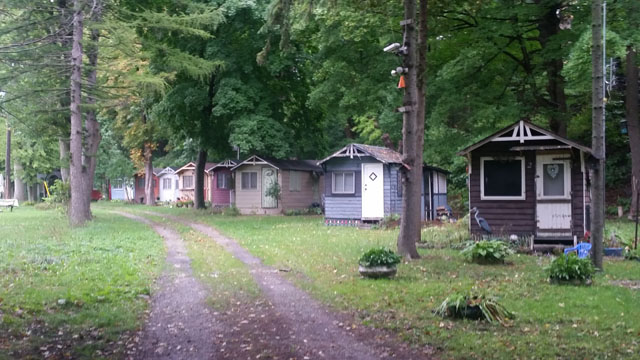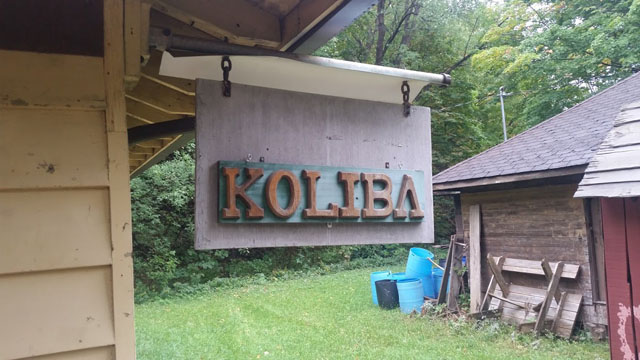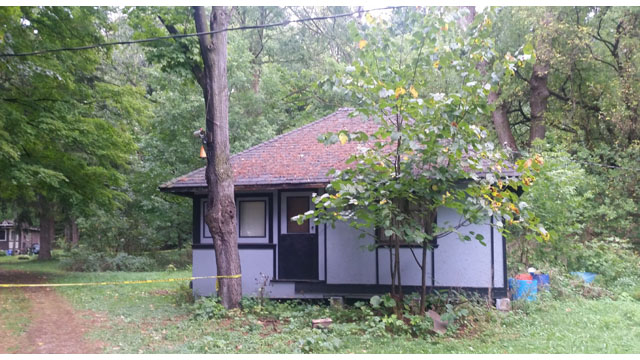The Truth Behind the Mysterious Koliba Park in Mississauga
Published October 3, 2016 at 6:27 pm

Have you ever wondered about a little gated community in the Streetsville area? The fenced-off camp has been the subject of rumours for years and was even given the derogatory nickname “Midgetville” on Wikipedia.
Well, I recently got the opportunity to explore the park after being called out on my description of the area in an earlier article.
Thankfully the owners of the property invited us to the Doors Open Ontario – Mississauga–an event where various locations across Mississauga are open to the public free of charge. I’m glad I had the opportunity to set the record straight and report what this gated area really is. Essentially, it’s actually a little piece of Slovak culture right in the heart of Mississauga.

According to Georgia Volker, one of the volunteers who helps maintain the property, and Anna Zapletal, the president of the Slovak Canadian Cultural Society, Koliba Park (as it is currently called), located at the end of Barbertown Road from the entrance on Eglinton Avenue, was purchased in 1945 by three Slovakian farmers returning to Canada around the end of WWII. Since 1945 was long before Mississauga was the modern city it is today, the property was once surrounded by abundant tracts of farmland (the farmers purchased approximately 10 acres). As the vast lands around the park were developed and built out over the years, this quaint little piece of land managed to retain its traditional Slovakian characteristics.
Koliba is a Slovak word meaning “Shepherd’s Hut,” and the park just celebrated its 70th anniversary, according to Zapletal. Koliba Park hosts five main events every year that are open to the public that run from May to October:
Opening Banquet (1st Saturday of May)
This is primarily the beginning of the season for the park as they open with a large banquet.
Slovak Canada Day picnic
A picnic around the end of June
The ‘JARMOK’ (pronounced Yar-mok)
This is a rummage sale that is held in mainly the Koliba Hall
The ‘Bravcove Hody’
According to Volker, this event is basically a sausage festival where a variety of traditional Slovakian sausage is cooked and served. It sounds like a great culinary adventure, if you ask me.

And of course, they participate in Doors Open Ontario. When I was there, there were plenty of visitors that came and went. Mississauga City Councillor Ron Starr also stopped by as well (the park is located in Councillor Starr’s ward). In fact, inside Koliba Hall they have a certificate given by the councillor recognizing their 70th anniversary.
So what else goes on at Koliba Park? According to Volker, besides the five main events that I just listed, the park is used for a multitude of things: Bulgarian dance troupes, Polish communities, and Slovak churches rent it out for their services. Councillor Starr mused when I saw him that Mississauga should have something akin to the Parade of Nations you see at the Olympics where representative from all cultures have a massive parade; it would be like the Canada Day parade on Yonge Street, except in Mississauga. Maybe the Carassauga people should think about a new way to promote a festival of cultures (of which Mississauga has in abundance) in a different format?
In general, I think Koliba Park is an example of keeping the Slovak culture alive in Canada; a way for one generation to pass their knowledge onto their children and grandchildren. Sadly, Koliba has struggled with getting more volunteers to help, particularly young people of Slovak descent. The property is quite old and maintaining it has been a challenge, and because of the persistent rumours of what it is, some vandalism has occurred (hence the locked gates).
There is one more interesting thing to share about this place, and it’s not actually in Mississauga…
I was informed of an interesting link between Koliba Park and one of the few Slovak communities that were established in Canada. Another gentleman who works with the park, Rudy Bies, along with Zapletal, were raised in a small northern Ontario village called Bradlo. Right next to the Koliba Hall is a shop that houses traditional Slovak clothing, items and remnants of a settlement that was established in 1930 by 150 Slovak families just 11 km south of present-day Hearst, Ontario. Bradlo (in Slovakia) is actually the burial site of a general named Rastislav Stefanik, who died in a plane crash in 1919.
In fact, Bradlo is the only Slovak community in Canada that has a traditional Slovak name. In 1997, the Ontario Heritage Foundation put up a plaque in Hearst to recognize the community, and although nature has since reclaimed Bradlo (nothing more than trees and a few concession roads exist in the community today), Bies and Zapletal travel back up every year to recognize the community they were raised in. Bies even told me one year they went up with Milan Kollar, the Slovak Republic’s Ambassador to Canada. The physical place maybe gone, but the spirit of Bradlo remains.
I could go on and on about this place; I took history in university and the history of Canada has always fascinated me. It’s thinking about the families that emigrated and put down roots here that really opens your eyes to how different societies and cultures have contributed to the fabric of Canadian identity and how, in this generation, even more will contribute to that fabric.
Canada (and Mississauga) is such a rich, diverse place.
INsauga's Editorial Standards and Policies


